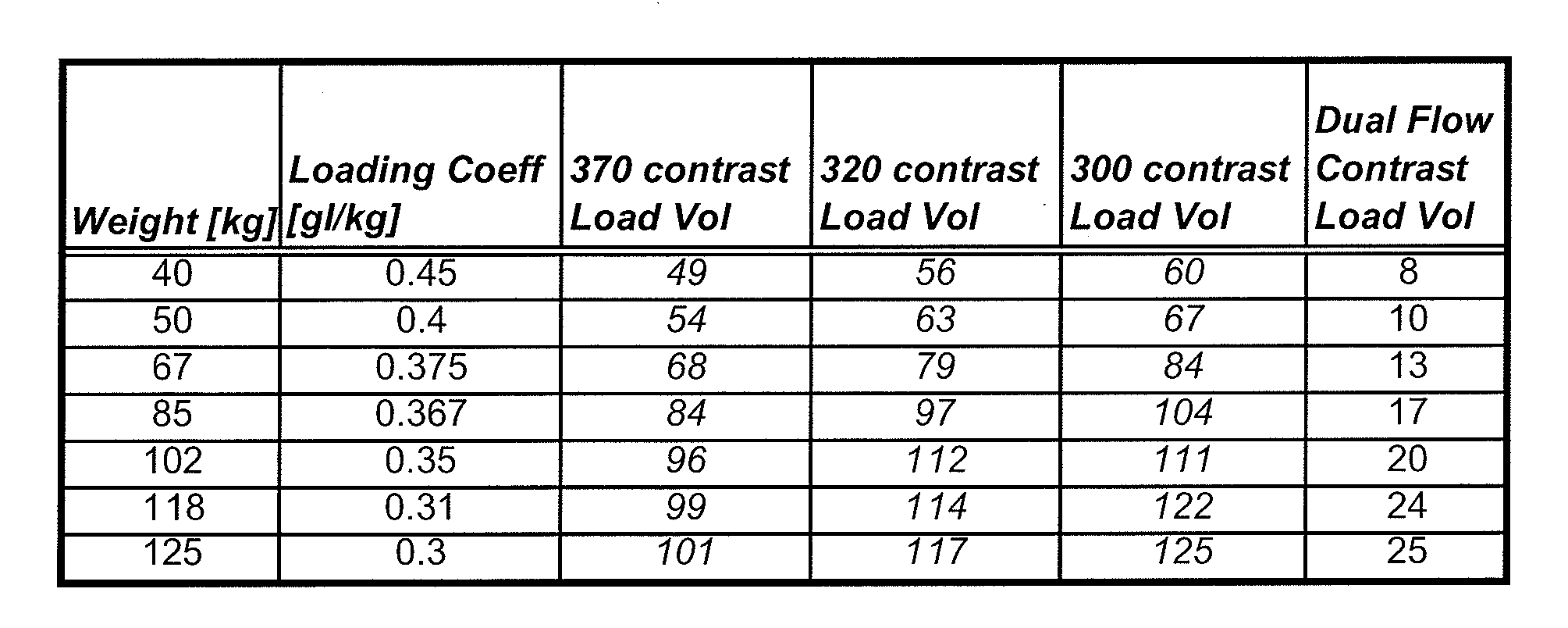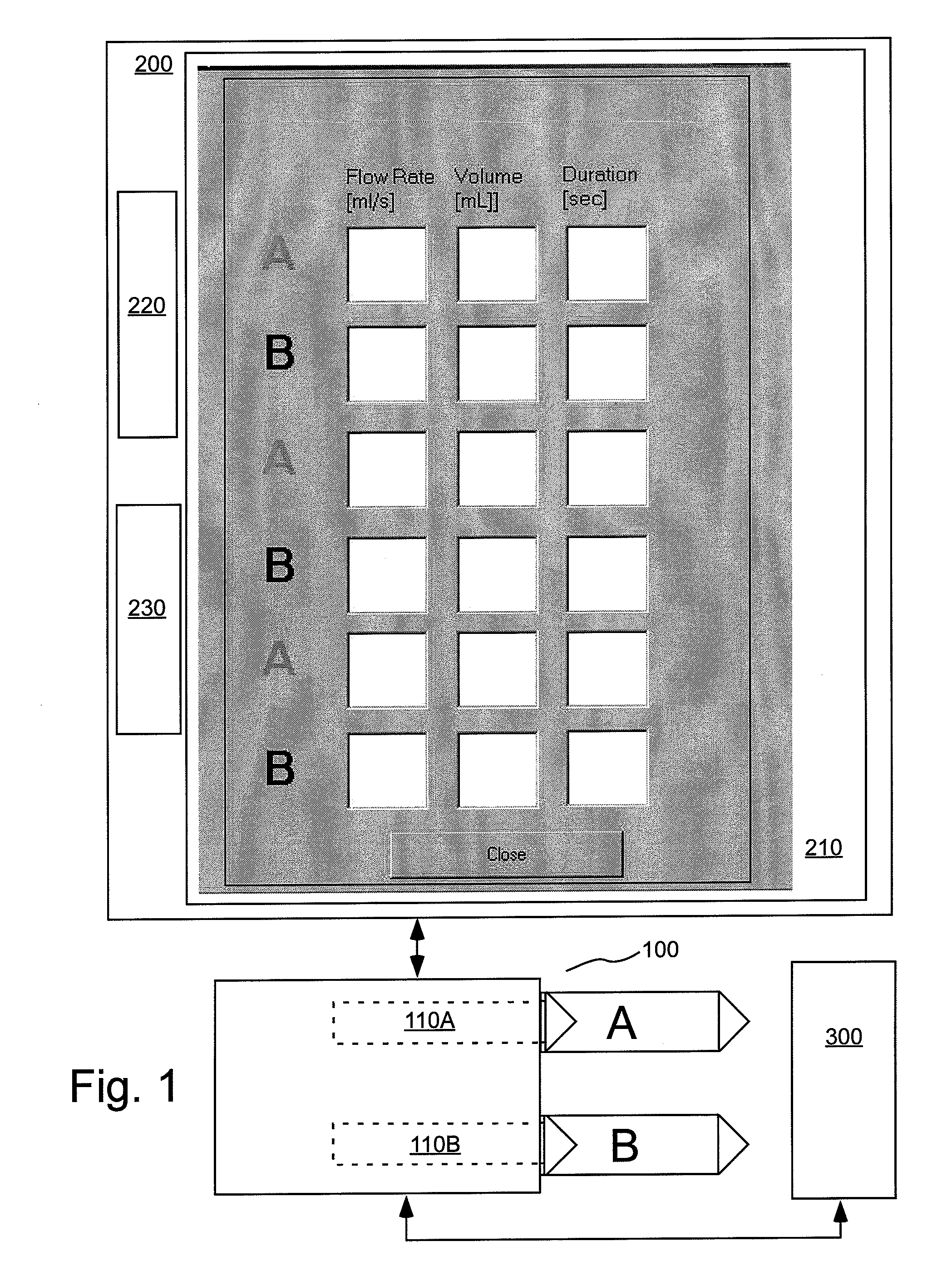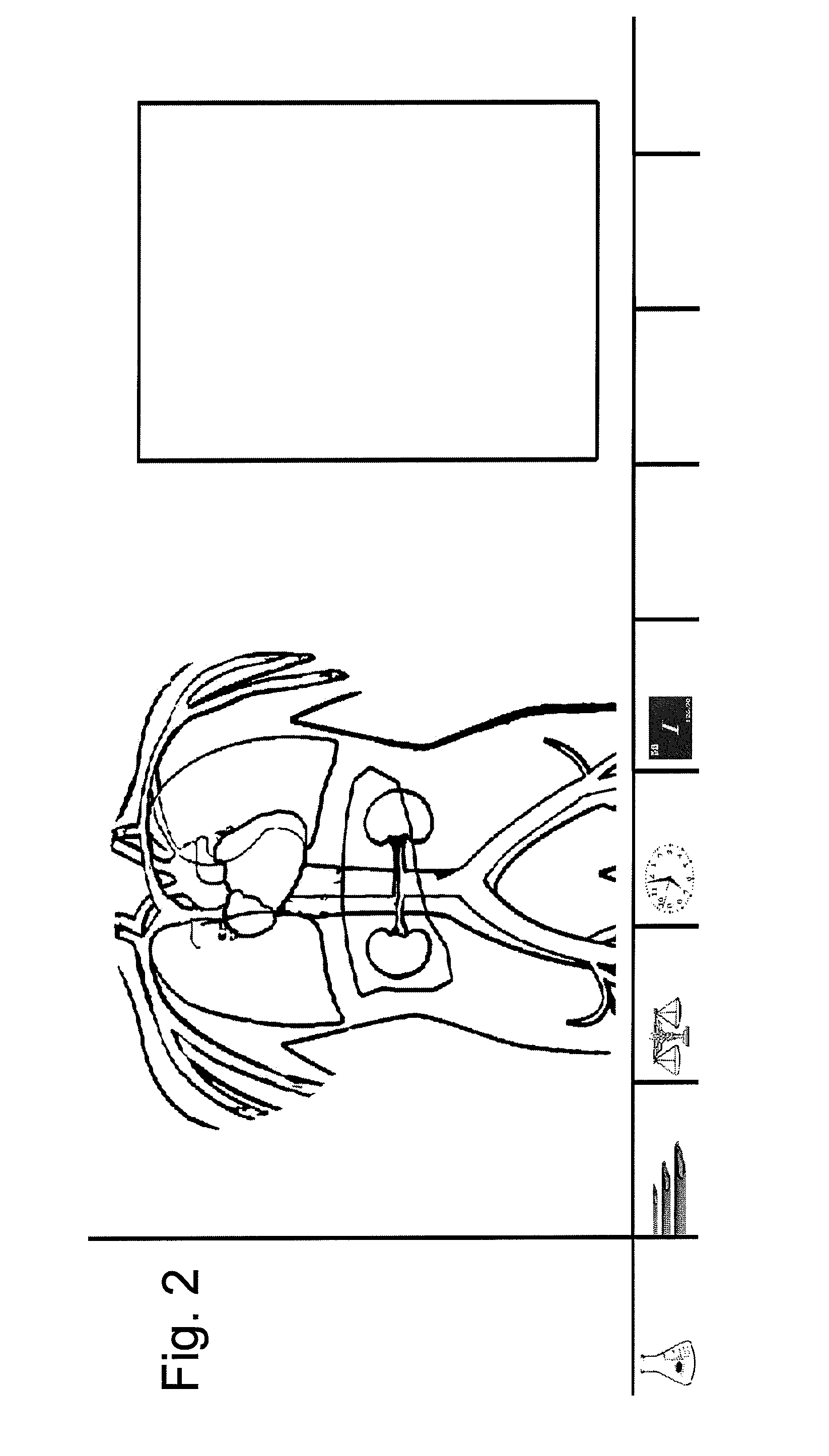Patient-based parameter generation systems for medical injection procedures
a patient-based parameter and parameter generation technology, applied in the field of patient-based parameter generation systems for medical injection procedures, can solve the problems of different image contrast and quality results, undeveloped parameters for the specific procedure of a specific patient, and injection profiles computed by inverse solution of the pk model are not readily realizable by most ct power injectors without major modification, so as to achieve the effect of reducing the volum
- Summary
- Abstract
- Description
- Claims
- Application Information
AI Technical Summary
Benefits of technology
Problems solved by technology
Method used
Image
Examples
Embodiment Construction
[0108]As used herein with respect to an injection procedure, the term “protocol” refers to a group of parameters such as flow rate, volume injected, duration etc. that define the amount of fluid(s) to be delivered to a patient during an injection procedure. Such parameters can change over the course of the injection procedure. As used herein, the term “phase” refers generally to a group of parameters that define the amount of fluid(s) to be delivered to a patient during a period of time (or phase duration) that can be less than the total duration of the injection procedure. Thus, the parameters of a phase provide a description of the injection over a time instance corresponding to the time duration of the phase. An injection protocol for a particular injection procedure can, for example, be described as uniphasic (a single phase), biphasic (two phases) or multiphasic (two or more phases, but typically more than two phases). Multiphasic injections also include injections in which the...
PUM
 Login to View More
Login to View More Abstract
Description
Claims
Application Information
 Login to View More
Login to View More - R&D
- Intellectual Property
- Life Sciences
- Materials
- Tech Scout
- Unparalleled Data Quality
- Higher Quality Content
- 60% Fewer Hallucinations
Browse by: Latest US Patents, China's latest patents, Technical Efficacy Thesaurus, Application Domain, Technology Topic, Popular Technical Reports.
© 2025 PatSnap. All rights reserved.Legal|Privacy policy|Modern Slavery Act Transparency Statement|Sitemap|About US| Contact US: help@patsnap.com



